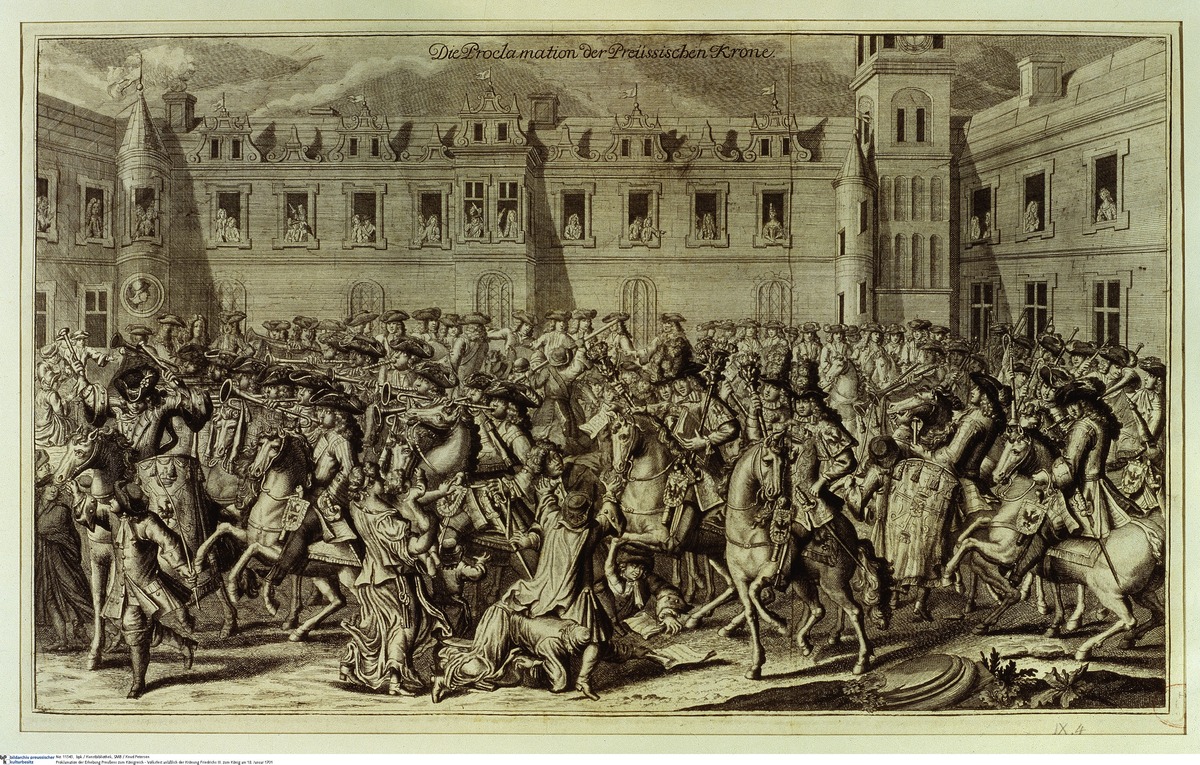Abstract
Frederick III (r. 1688-1713), the son of Frederick William (the
“Great Elector”), was in many ways the opposite of his father, who,
after the devastations of the Thirty Years War, had pursued a determined
– if sometimes Machiavellian – policy of aggrandizement based on
military order, Calvinist discipline, and economic improvement.
Frederick III, on the other hand, spent lavishly on Baroque pomp and
display – expenditures that happily benefited the arts and sciences as
well. Despite bureaucratic growing pains and painful agrarian crises, he
achieved his goal of elevating the Duchy of Prussia to the Kingdom of
Prussia by honoring his father’s commitment to the Empire and supporting
Leopold I (r. 1658-1705) in the War of the Spanish Succession (1701-14).
In exchange, the emperor recognized Frederick’s self-coronation as King
in Prussia (an eastern Baltic duchy
outside of the Empire). The coronation took place in Königsberg on
January 18, 1701. The engraving shows the accompanying coronation
festival for the common folk.
